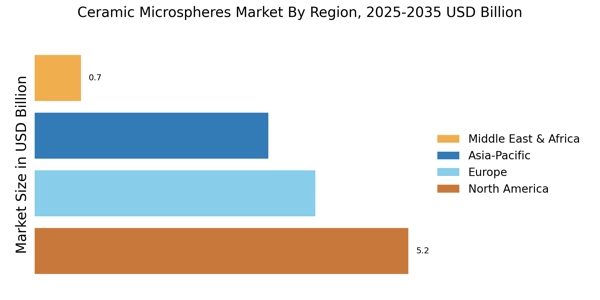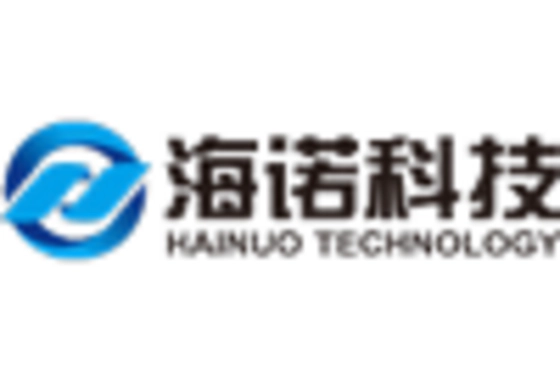Rising Demand in Construction Industry
The Ceramic Microspheres Market is experiencing a notable surge in demand due to the expanding construction sector. As construction projects increasingly prioritize lightweight materials for insulation and structural applications, ceramic microspheres offer an attractive solution. These microspheres enhance the performance of construction materials by improving thermal insulation and reducing weight. According to recent data, the construction industry is projected to grow at a compound annual growth rate of approximately 5.5% over the next few years, which could significantly boost the demand for ceramic microspheres. This trend indicates a shift towards more efficient building materials, positioning ceramic microspheres as a key component in modern construction practices.
Advancements in Manufacturing Techniques
Innovations in manufacturing processes are playing a crucial role in the Ceramic Microspheres Market. Enhanced production techniques, such as advanced sintering and spray drying, are enabling manufacturers to produce microspheres with improved uniformity and performance characteristics. These advancements not only increase the efficiency of production but also reduce costs, making ceramic microspheres more accessible to various industries. The ability to tailor the properties of microspheres for specific applications, such as in coatings and composites, is likely to drive further adoption. As manufacturers continue to refine their techniques, the market for ceramic microspheres is expected to expand, catering to diverse industrial needs.
Growing Applications in Oil and Gas Sector
The Ceramic Microspheres Market is witnessing increased utilization in the oil and gas sector, particularly in drilling and exploration activities. Ceramic microspheres are employed as lightweight additives in drilling fluids, enhancing their performance by improving viscosity and reducing density. This application is particularly valuable in deep-water drilling operations, where the need for efficient and effective drilling fluids is paramount. The oil and gas industry is projected to invest heavily in exploration and production activities, which may lead to a heightened demand for ceramic microspheres. This trend suggests that the ceramic microspheres market could see substantial growth as the energy sector continues to evolve.
Environmental Regulations Driving Innovation
The Ceramic Microspheres Market is being influenced by stringent environmental regulations that encourage the use of eco-friendly materials. As industries face increasing pressure to reduce their carbon footprint, ceramic microspheres present a sustainable alternative to traditional materials. Their lightweight nature and thermal insulation properties contribute to energy efficiency in various applications, aligning with regulatory requirements. Furthermore, the shift towards sustainable practices is prompting manufacturers to innovate and develop new formulations of ceramic microspheres that meet environmental standards. This focus on sustainability is likely to propel the market forward, as companies seek to comply with regulations while enhancing their product offerings.
Increased Investment in Research and Development
Investment in research and development is a significant driver for the Ceramic Microspheres Market. Companies are allocating resources to explore new applications and improve the performance of ceramic microspheres across various sectors. This focus on R&D is fostering innovation, leading to the development of advanced microspheres with enhanced properties, such as improved thermal stability and chemical resistance. As industries recognize the potential of ceramic microspheres in applications ranging from aerospace to automotive, the demand for innovative solutions is likely to rise. This trend indicates a robust future for the ceramic microspheres market, as ongoing research efforts continue to unlock new possibilities.


















Leave a Comment